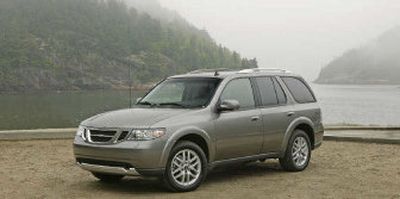Saab enters hot 9-7X into SUV race

Infusing a General Motors truck platform with the sensibility of a Swedish sport-sedan is not a task for the vision-impaired.
That was the charge Saab engineers faced when called upon to fashion from GM components a sport-ute that would be acceptable to Saab loyalists.
There are, of course, many among them who don’t believe Saab should be in the SUV business, period — wasn’t it Saab, after all, that taught us to tame the snow with its pioneering front-wheel drive configuration?
And if they must have an SUV, must it be built on the same body-on-frame truck platform found under the Chevrolet Trailblazer, Buick Rainier, GMC Envoy and Isuzu Ascender?
But Saab needed an SUV; 39 percent of its owners have a sport-ute in addition to their Saab, and 30 percent had actually abandoned the company in order to buy an SUV.
No car brand can afford to let that kind of business walk, but especially a fringe brand like Saab. Porsche had faced the same predicament and, over the protests of enthusiasts, built the Cayenne SUV, which quickly became the company’s best seller and helped fund development of the Cayman S sports car and the coming Panamera super-sedan.
A successful Saab SUV would stabilize brand sales in the United States and might even help GM recoup some of the losses it has suffered since absorbing Saab 17 years ago.
Saab engineers faced a formidable set of tasks, but none greater than tricking the GM platform into behaving as if it were a sport sedan. The feat was two years in the making, said Paul Jaremko, Sr., president of Jaremko Motors.
For starters, Saab’s suspension wizards lowered the ride height by an inch, bringing down the center of gravity and reducing body roll.
They added a beefy front stabilizer bar, firmed up the rear upper control-arm bushings and retuned the shock absorbers to dampen unwanted body motion.
To enhance grip at the point of contact with the road surface, Saab had Dunlop develop a set of 55-series, 18-inch high-performance tires.
The steering system was next. To improve responsiveness and precision, Saab stiffened the front section of the frame. They tuned the system for improved on-center feel and smoothness of operation and quickened the ratio to 18.5:1.
While they were at it, Saab engineers equipped the 9-7X with full-time all-wheel drive, a limited-slip differential, stability control and a rear air suspension.
Remarkably enough, the graft took and while the body-on-frame construction takes its toll on handling at the limits, the 9-7X is surprisingly agile. The rig has too much heft up high to stay light on its toes during fast transitions, but it remains flat and stable during steady-state cornering.
Saab loyalists should also find that ride quality is up to its high standards. The 9-7X is neither ultra-firm nor too soft. It’s soft enough to take the sting out of rough road surfaces but not so soft you won’t be aware of them.
Saab also needed to give GM’s basic sport-ute sheet metal a touch of Euro-flair and crafted a new front end with Saab’s familiar three-port grille. The wraparound headlights and taillamps lend the familiar SUV shape a sharp, contemporary feel, and designers steered well clear of extraneous body cladding, which would have cluttered their minimalist vision.
Out back, they fashioned a tail that would emphasize, not minimize, the visual impact of the twin tailpipes.
If the Barista Test is any indication, they got the look right. The young lady at the neighborhood java hut recognized it right off and made all the proper, appreciative noises when I drove up in my Obsidian Black tester.
Nothing but a Saab interior would have done, either.
Even the hardcore loyalist will feel at home in the 9-7X cabin. The gauges and instrument panel are pure Saab, the leather-lined seats are heated and the doorsills and latticed air vents come straight from the Saab design book.
The ignition switch is located, Saab style, in the center console between the front seats.
The ignition sets into action one of two GM power plants, a 4.2-liter inline six that makes 291 horsepower or a 5.3-liter V-8 that makes 300 hp. The difference is torque: the six makes 277 foot-pounds; the eight is rated at 330 hp, making it the obvious choice for those who tow.
The eight is equipped with GM’s Displacement on Demand system, which deactivates certain cylinders during periods of low demand, improving fuel economy by as much as 5 percent.
Dual-stage front airbags and curtain-style airbags are standard, as is a rollover sensing system.
Without a doubt, Saab arrived late at this party, but even with enthusiasm for large SUVs waning, the 9-7X will help neutralize the losses the company now experiences as loyalists shop elsewhere for their SUVs.
Besides, there’s just enough Saab in this Swedish-U.S. hybrid to keep peace in the family.